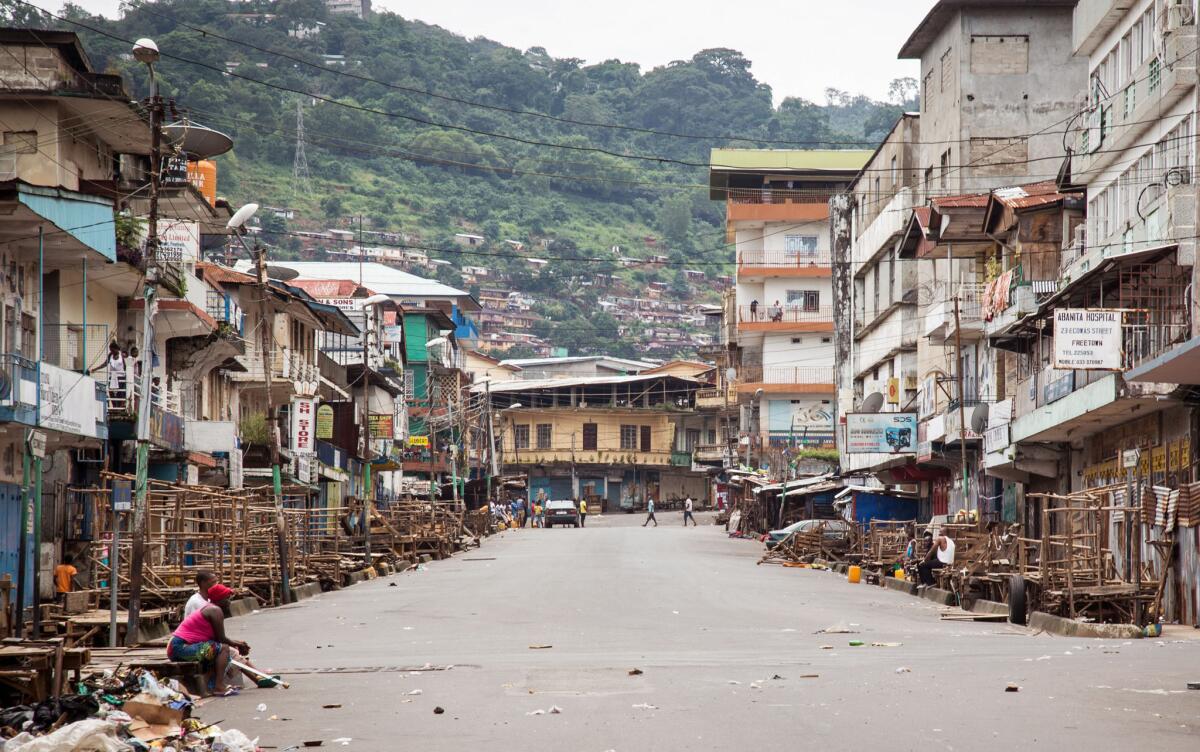Sierra Leone identifies scores of Ebola cases during three-day curfew

At least 130 Ebola cases were identified and scores of bodies buried during a three-day curfew in Sierra Leone, the country’s health authorities said Monday, calling the controversial effort largely successful.
In one of the most aggressive moves yet to stem the virus spreading through parts of West Africa, Sierra Leone’s 6 million people were ordered to stay home round the clock while about 30,000 healthcare workers and volunteers went door to door to educate about Ebola and find people who might be spreading the deadly disease.
The aim of the campaign was to overcome the fear and distrust that have kept many sick people from reporting symptoms of the virus, which is spread through contact with the bodily fluids of victims.
Humanitarian workers warned that it could have the opposite effect, increasing suspicion of the health authorities and driving the disease underground. But Stephen Gaojia, who heads the country’s Ebola Emergency Operations Center, told the BBC that the receptiveness of Sierra Leoneans was “overwhelming.”
More than 1 million households were visited during the round-the-clock curfew, which ended late Sunday, about 75% of the homes authorities had hoped to reach, according to figures released by the Health Ministry.
Although the full results of the effort won’t be announced until Tuesday, Gaojia told the BBC that at least 130 new cases had been confirmed and results were pending on 39 suspected cases.
Authorities also buried at least 77 bodies, half of which tested positive for Ebola, Abdulai Bayraytay, a government spokesman, told the Associated Press.
But in at least one case Saturday, residents attacked members of a burial team dressed in biohazard suits, forcing them to abandon five bodies and flee. The team eventually managed to bury the bodies with the help of a police escort, but the incident highlighted the shortcomings of local and international communications efforts.
There were also rumors that the soap that volunteers were distributing to encourage hand washing was poisoned.
This is the first time that Ebola has spread to West Africa, where more than 2,800 people are believed to have died of the disease since the outbreak was reported in March, according to figures released by the World Health Organization on Monday. Previous outbreaks were concentrated in Central Africa.
Most of the more than 5,800 suspected and confirmed cases have been identified in Liberia, Sierra Leone and Guinea. But there have also been reports of Ebola patients in Nigeria and Senegal. Sierra Leone accounts for 1,813 of the reported cases, including 593 deaths, the WHO said.
The epidemic has overwhelmed the region’s shaky health infrastructure. Authorities in Sierra Leone were preparing tents to temporarily house patients after the weekend lockdown, the AP reported.
Doctors, nurses and other caregivers are among those at greatest risk of infection. At least 348 healthcare providers have contracted Ebola and 186 have died, the WHO said.
A Spanish priest who caught Ebola while working as a medical director at a Sierra Leone hospital was flown to Madrid on Monday for treatment, news reports said. Manuel Garcia Viejo is the second Spanish missionary to become infected in the current outbreak. Miguel Pajares, who tested positive for Ebola while working in Liberia, was flown back to Spain and treated with the experimental drug ZMapp. But he died last month.
Also Monday, a nurse was flown to Switzerland for observation after he was bitten by an infected child while working for an international organization in Sierra Leone, Swiss news reports said. The man, who was not indentified, was wearing protective clothing at the time, and the risk of infection was believed to be low.
For more international news, follow @alexzavis on Twitter
More to Read
Start your day right
Sign up for Essential California for news, features and recommendations from the L.A. Times and beyond in your inbox six days a week.
You may occasionally receive promotional content from the Los Angeles Times.







